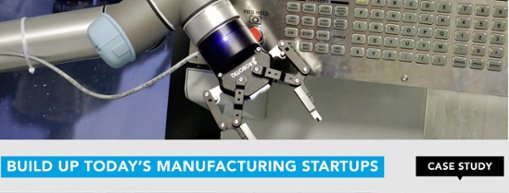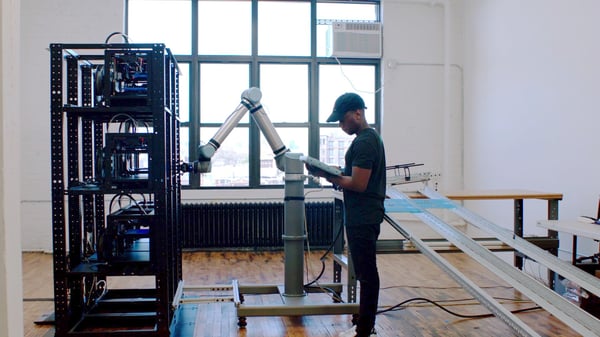How to Shop for a Robot

Posted on Apr 09, 2018 7:00 AM. 2 min read time
No matter who you ask about the future of manufacturing, you'll probably hear that it lies in the field of robotics. The challenges manufacturers face are numerous and varied, but with the help of today’s robots, they can be overcome.
Join us today as we look at Robotiq's new eBook, How to Shop For a Robot. Keep reading to find out what this eBook has to offer!
Before you start shopping
According to the eBook, there are two things you must do before you even start looking for a robot.
First, you should assign a project manager to oversee the entire robot-integration process. It's a good idea to choose someone who:
● Is passionate about the project
● Understands the processes that must be followed
● Is generally knowledgeable about how robots work
● Knows how to get others on the shop floor involved with the project
This person must also be able to communicate with workers throughout the plant.
Since one of the most important parts of their job will be addressing any concerns that workers may have about robots, they must know how to demonstrate the benefits of robots in the workplace. (This is even more important if you want to integrate collaborative robots, because people will be working alongside them.)
Second, you should prepare a communications plan. This will help your project manager outline the plans for integration with the workforce.
When developing your plan, consider how you'll respond to these potential questions and concerns:
● Why are you putting a robot on the shop floor?
● Does this mean I'll lose my job?
● Aren't robots dangerous?
● Will I need to interact with the robot? What will I be doing?
● How will I operate the robot? What kind of training do I need?
What to look for
Once you're ready to shop for the right robot, the eBook suggests focusing on these five different specifications:
● Payload
● Reach
● Repeatability
● Ease of programming
● Safety
There are many other specifications you could consider – like the robot's weight, speed, acceleration, lifecycle, environmental specs, and support – but these tend to be less important.
Next you'll be looking at accessories for your robot. First up is the end-effector, which is basically the robot’s “hand.”
It’s important to choose an end-effector that suits your application. They aren't “one-size-fits-all” (or rather, one-type-does-everything)! In some cases, you might need a specialized one to get the job done properly.
You also need to consider sensors for your robot. These include vision systems, force torque sensors, and others.
Finally, you’ll need to look at robotic cell configurations and options for part picking, processing, and placement. All these topics and more are covered in this excellent eBook.
If you’re interested in reading more, be sure to check it out, and let us know if you’ve read this particular eBook in the comments!









Leave a comment